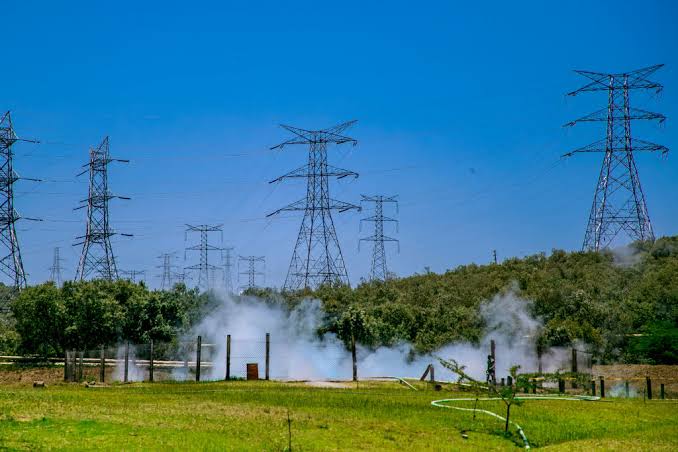NAKURU,Kenya, Oct, 20 – Geothermal Development Company (GDC) has signed a Memorandum of Understanding (MOU) with Nakuru County Government to establish a geothermal heat park that will be using residual heat from geothermal power plants for direct use applications.
GDC Managing Director Engineer Jared Othieno explained that the establishment of a geothermal heat park as an industrial park would make use of residual heat from GDC’s geothermal power plants for direct-use in industrial applications such as timber drying, milk pasteurization, and grain drying.
Besides electricity, geothermal energy provides direct heat to industrialists, a by-product of electricity in the form of steam coming from power plants at about 1500C, which Engineer Othieno said was affordable and “a game changer in the manner in which Kenya’s wealth, as an emerging mid-income industrial society, would be achieved.
The MD said GDC had previously appealed to investors to establish industrial parks in the Menengai and Baringo-Silali geothermal areas that would make use of the residual steam from the wells in the two zones.
He said that GDC had for years, been conducting pilot test for geothermal direct-use applications technology in the Menengai geothermal field to showcase the viability of direct use technology and as a marketing tool for GDC to potential investors, research and learning institutions and the community that surrounds Menengai Crater.
The demonstration projects, he added include steam heated green houses, steam heated aquaculture ponds, geothermal milk pasteurizer plant, geothermal laundry unit and geothermal grain dryer.
In the industrial park, the most important component for a heat park to operate is the geothermal heat mined from steam, and which Othieno affirmed it was readily available.
Othieno further said the use of geothermal steam in industrial processes would reduce greenhouse gas emissions and that it was a reliable and available source of energy through all seasons.
“The steam produced by GDC is clean and can support various industrial processes ranging from industrial, agriculture, tourism, leisure and domestic, depending on the resource temperature and usage,” assured Othieno.
According to the MD, the use of geothermal steam instead of fossil fuels in manufacturing, positions GDC as a vital component in Kenya’s energy transition strategy and could make Kenya a more attractive investment destination for companies seeking green energy.
In an elaborate report, Net Zero by 2050: A Roadmap for the Global Energy Sector, the International Energy Agency (IEA) was quoted discouraging the selling of fossil fuel boilers beyond 2025 as a pathway of achieving net zero by 2050.
The MD stated that the future of heating industrial boilers in the country would be through the perfect mix of geothermal energy and technology that was now shaping up at places like Menengai.
Geothermal is widely considered a preferable, low-cost renewable energy source due to low emissions when compared to thermal sources. It is also cheaper than thermal power when used as an alternative to mitigate depressed hydropower generation due to drought.
Kenya has a target of 5 gigawatts (GW) geothermal capacity by the year 2030 with Green energy power plants under development in the country including the 300 MW Lake Turkana Wind Power Plant, which is the single largest wind power plant in Africa, the 70 MW Olkaria 1 and the 140 MW Ol Karia V.
According to the Renewables Global Status 2018, Kenya tops in Africa with 700 megawatts (MW) of geothermal power, retaining its place compared to last year. The US has the largest geothermal generating capacity with 2,500 megawatts followed by the Philippines (1,900 MW), Indonesia (1,800 MW), Turkey (1,100 MW), New Zealand (1000 MW), Mexico (900 MW), Italy (800 MW) and Iceland (750 MW).
Want to send us a story? Contact Shahidi News Tel: +254115512797 (Mobile & WhatsApp)


